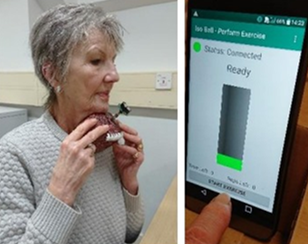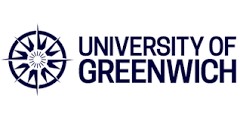
Squeeze to Swallow
Chest infections and pneumonia are common causes of admission to the hospital for older people. 90% of cases may be due to the inhalation of infected saliva or food/liquid. Many older adults do not recognise that they have a problem with their swallowing.

Airway Protection
The pharynx (throat) is a crucial part of human anatomy performing both swallowing and breathing. When we swallow the airway is protected by the larynx (voice box) lifting and rotating forwards so that it comes into contact with the back of the tongue. The valve between the pharynx and the esophagus (gullet) relaxes, allowing the food and liquid to pass through on its journey down the esophagus to the stomach.
Lifting of the larynx requires good functioning muscles (suprahyoid muscle complex) strength. The quality and function of these muscles may deteriorate with age, as a consequence the larynx does not lift as high or rotate as far forward as in younger adults. Similarly, the valve at the top of the esophagus does not relax and food gets stuck in the pharynx. Following a swallow breathing commences and food could be inhaled from the pharynx. Food can enter the airway during or after swallowing.
Research Question
By exercising the suprahyoid muscles, either by tongue exercises or neck exercises, it is possible to improve the safety of swallowing, reduce the risk of developing a chest infection and increase the amount of food eaten. The question we are asking is: Can chin tuck against resistance (CTAR) exercises with isometric biofeedback improve peoples’ swallowing and nutrition. This research will help us understand whether a larger research study is possible.
Research Intervention: The “ExerPhager”
We have developed the “Exerphager” which employs the CTAR (squeezing a ball under the chin) exercise proposed by others to assist in rehabilitating weak swallowing muscles. The benefit of our system is that the Exerphager, a small rugby ball with a solid-state electronic battery-powered pressure gauge that connects to an Android smartphone or tablet by Bluetooth, gives feedback on exerted pressure/effort to target the level most appropriate for the individual participant. The squeeze of the ball will be a consistent effort. Participants will be asked to provide a maximal squeeze, the Exerphager then calculates 30% of maximal effort and uses this as the target squeeze.
Participants will be requested to perform an isometric squeeze for one minute, three times, with a rest between each squeeze. The intervention lasts for 12 weeks and will be undertaken once or twice per day.

At the start and at monthly intervals, an assessment of the swallow, the amount being eaten and walking speed will be done. At the end of the study, participants will be interviewed to enable the research team to identify areas of the study that need improvement before a larger study. We also plan to look at recruitment rate, and the numbers completing the study.
To Conclude
This research is investigating whether a larger study to rehabilitate swallowing in older adults with pneumonia admitted to hospitals would be possible and worthwhile.

University of Greenwich logo
Comments